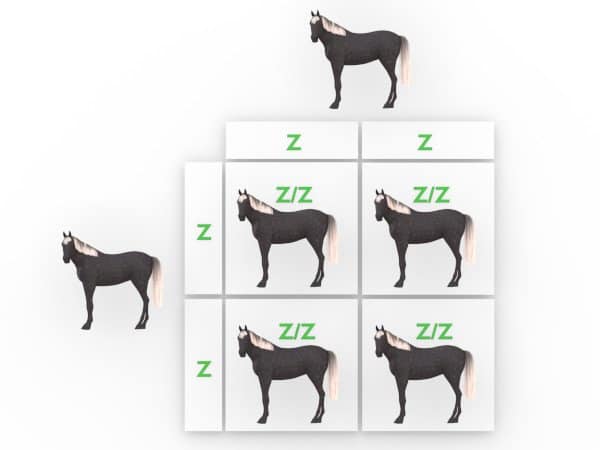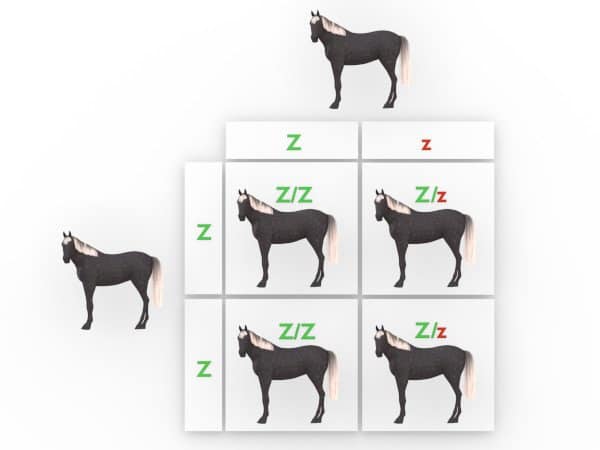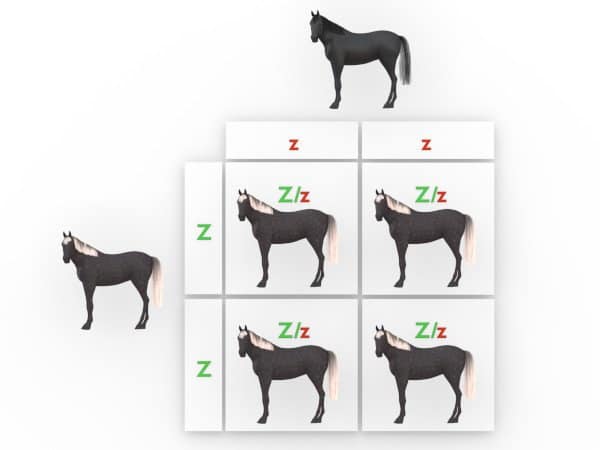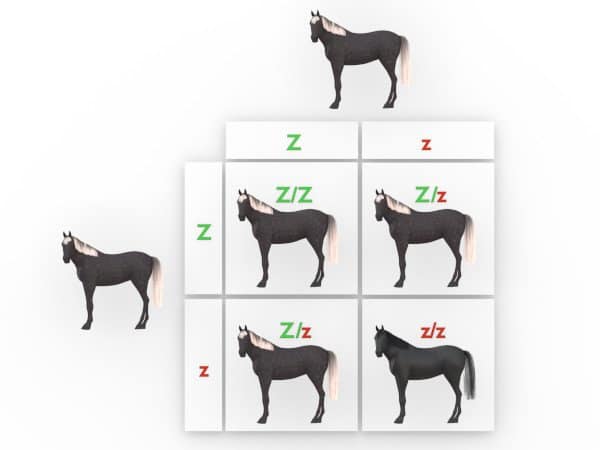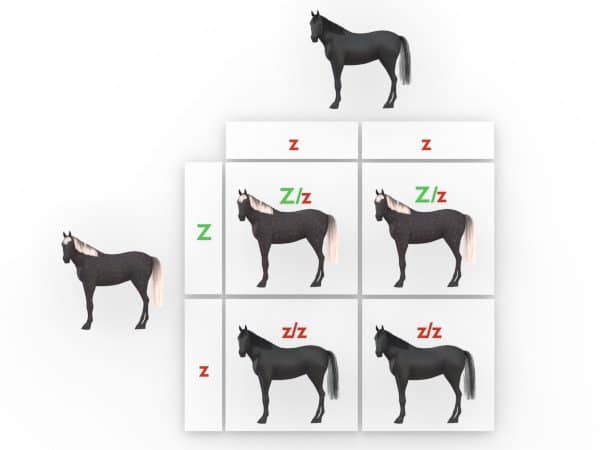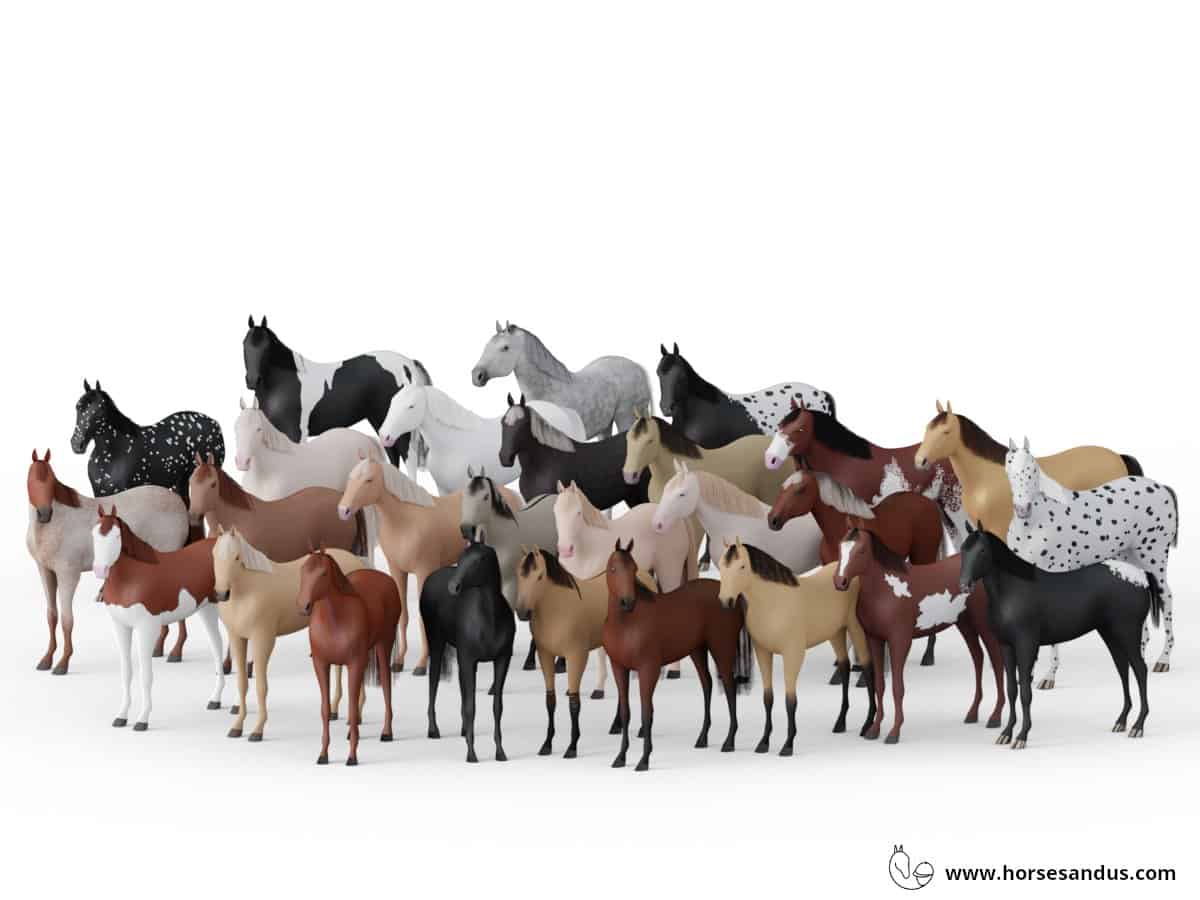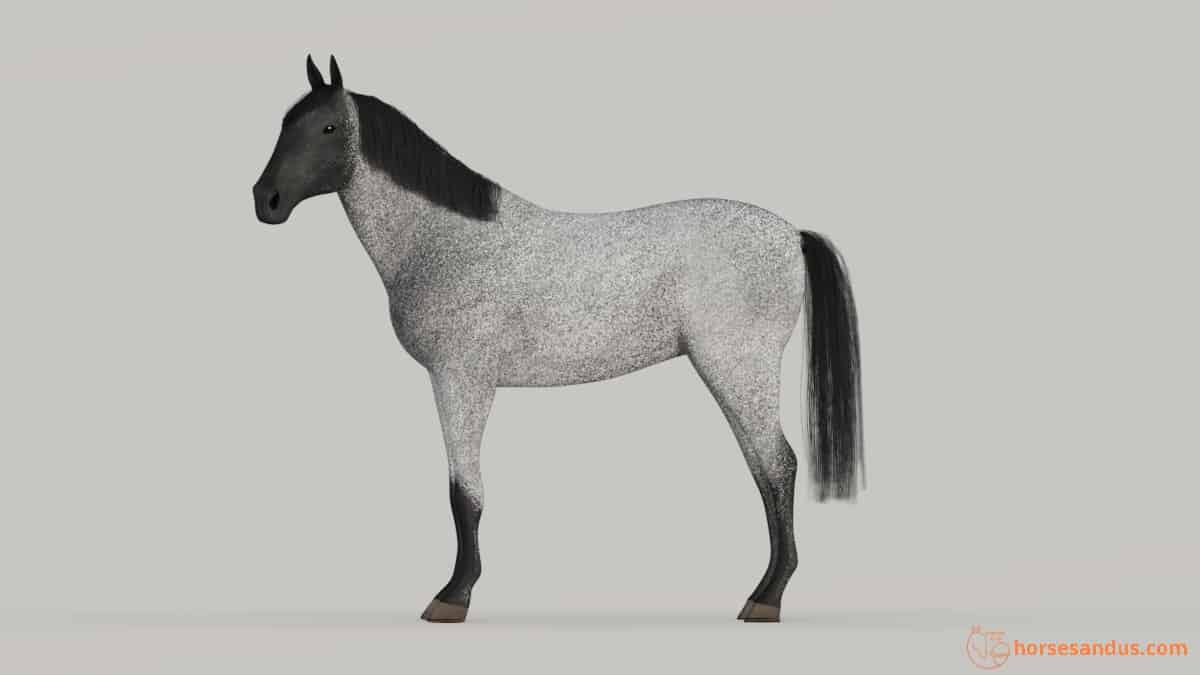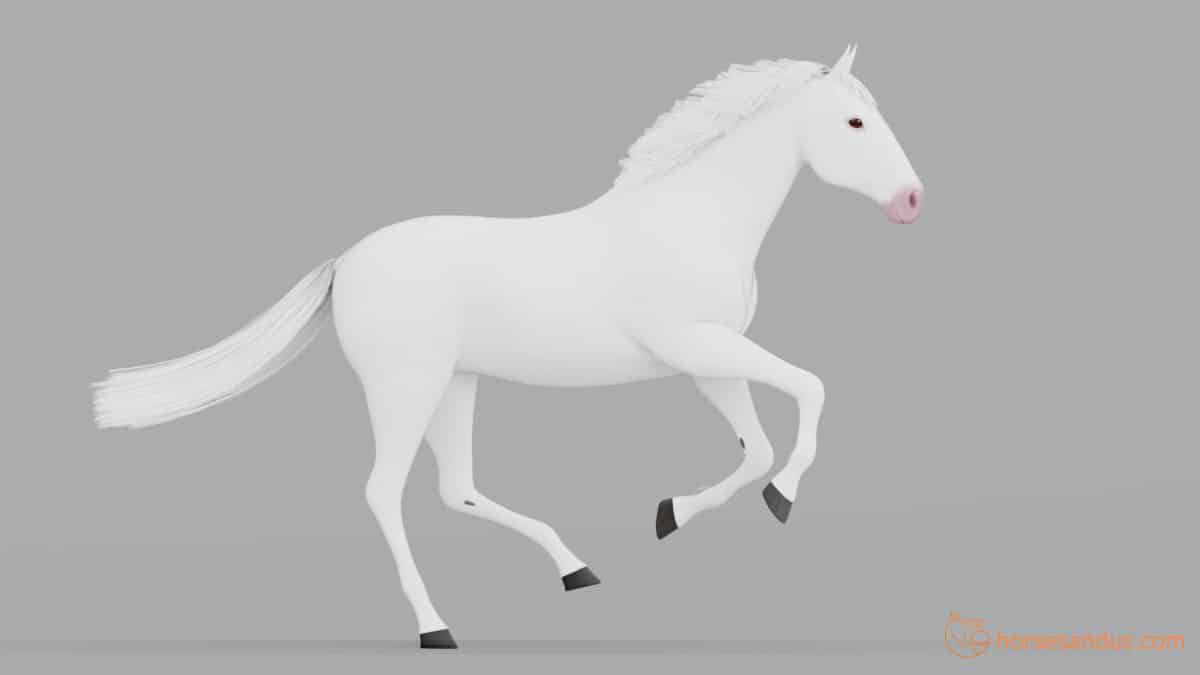The silver horse has a very attractive coat dilution, especially on the black-based horses, and is therefore highly valued.
The Silver horse also called Silver Dapple or “Taffy” (in Australia), is affected by the Silver dilution gene that lightens the black hair pigment but has almost no effect on red pigment. The coat often has dapples, which is why it is also called Silver Dapple. The manes and tails can vary from a pure white shade to a very dark silver.
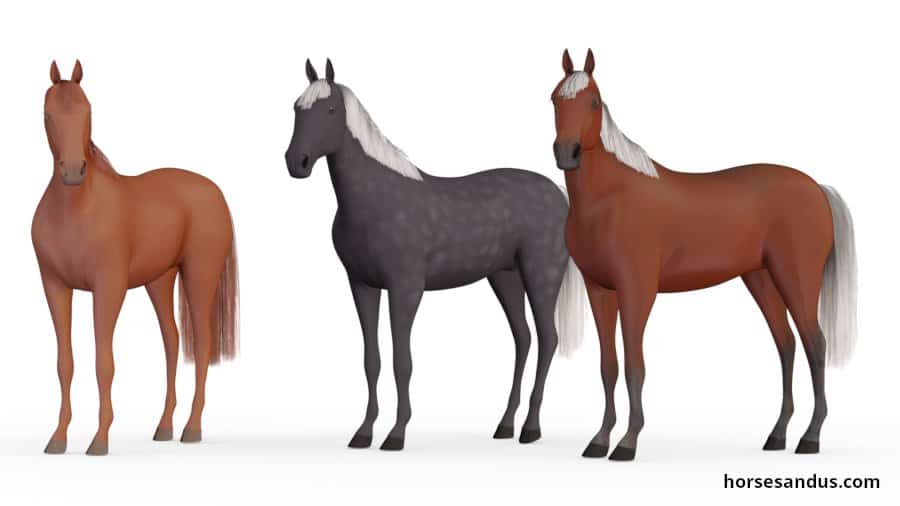
There is a huge variety of horse coat colors and patterns. In this article, we will look at the colors produced by the silver gene.
Characteristics of the Silver horse
The Silver dilution gene produces a moderate lightening of black pigment on the body coat to a brown or chocolate shade. It often exhibits dapples (rings of lighter hair).
The dilution effect of the Silver gene is more extreme on the mane and tail. It produces a white or silvery color resulting from a mixture of white and grey hairs. These manes are often mistaken for flaxen, but unlike flaxen, the roots are dark, and the tips are lighter.
The shade of the manes and tails often darkens as the horse ages.
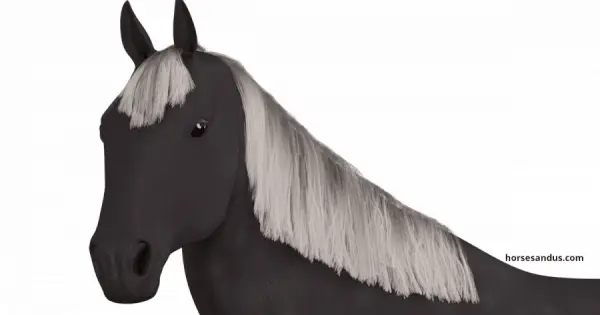
Limbs can be either whitish or near black colored. The eyes and skin are dark.
Silver foals usually have the following characteristics:
Very pale body, with a white mane and tail.
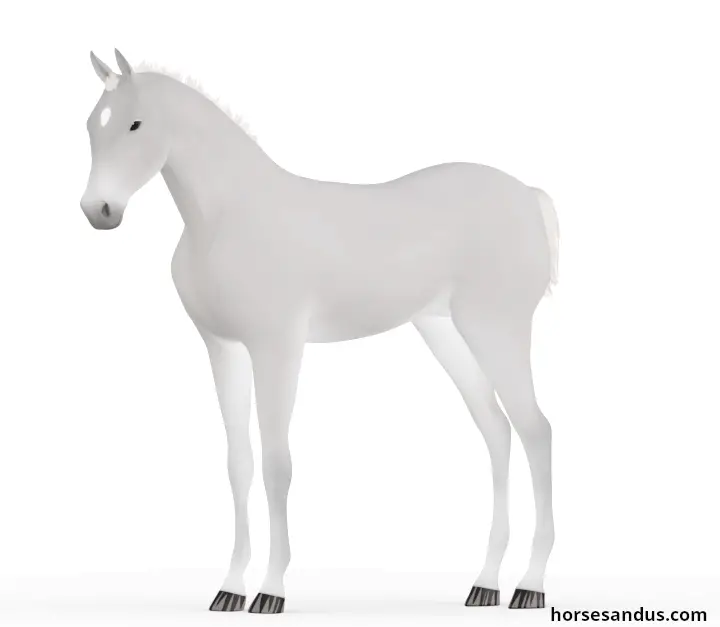
Often display striped hooves. These stripes usually disappear after about one year, which is the time it takes for the hoof wall to grow from the coronet to the ground surface.
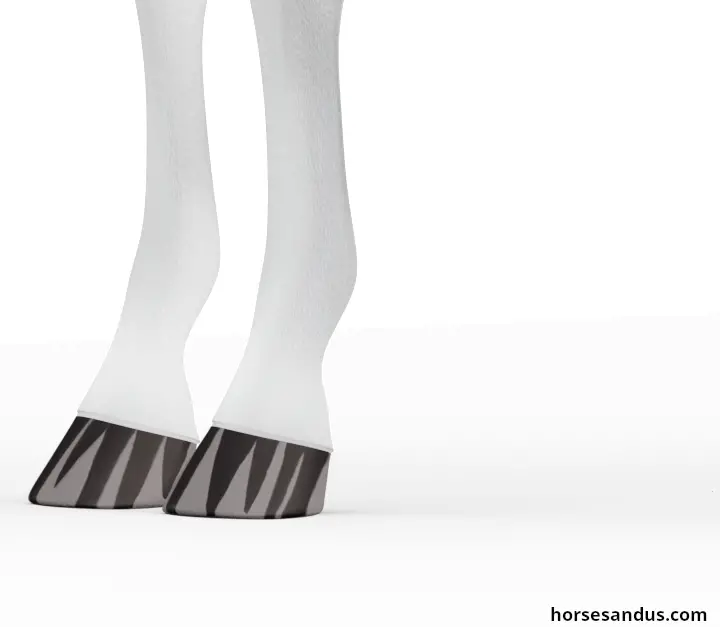
Silver dilution on the 3 base coat colors
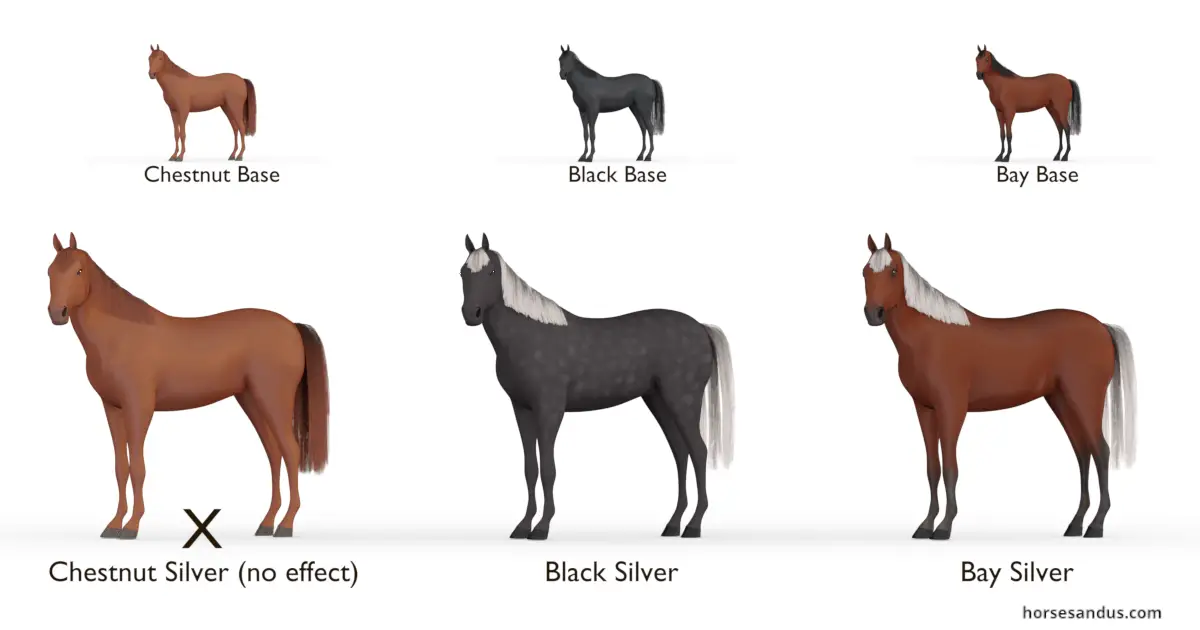
The shade of a silver horse varies with the underlying base coat color.
Horses with the silver diluted coat are called black silver and bay silver, with the base color coat being black and bay respectively.
Silver Black Horse (Silver dapple or Chocolate)
A Silver Black horse coat color is the result of the Silver dilution on a black coat.
The shade of the body can range from creamy chocolate all the way to a chocolate brown or deep grey and often has dapples (rings of lighter hair).
The mane and tail can vary from white to a sooty silver. But they can also be a chocolate color.
Silver Blacks without dapples are called Chocolate Silver.
Silver black horses can be mistaken for flaxen liver chestnuts or very sooty palominos. But the roots of the mane and tail are dark, contrary to the lighter ones of the flaxen manes and tails.
Silver Bay Horse (Red Chocolate)
A Silver Bay horse coat color is the result of the Silver dilution on a bay coat.
The Silver Bay horses retain their reddish body color because the gene does not act on red pigment. But if the bay coat is dark, then it may show some dilution, and the presence of small amounts of silver gives them a chocolate appearance.
The mane and tail are lightened to a white or sooty silver color. The legs can be diluted to a brownish-grey, mottled with whitish or silver hair.
The hair around the eyes and muzzle can also be silver.
Silver Bay horses can be mistaken for flaxen chestnuts or sooty palominos. But the roots of the mane and tail are dark, contrary to the lighter ones of the flaxen chestnut. Also, the color of the lower part of the legs of the flaxen chestnut has a red or whitish color, while in the Silver Bay, it fluctuates from light to dark brown.
Silver Chestnut Horse
A Silver Chestnut horse coat color is not technically a color because the Silver gene does not affect the red pigment of the chestnut horse (or the effect is so subtle that it is not clearly visible).
However, we use this name to designate a chestnut horse that carries a Silver gene, which goes unnoticed until they have an unexpected Silver foal or a genetic test is done to detect it.
Equine Silver Gene Dilution Effect (Animation)
The genes behind the Silver dilution

Silver color in horses is controlled by the Silver dilution gene, which is dominant and represented by Z.
The dilution allele (Z) is dominant over non-dilution (z). This means that both homozygous (Z/Z) and heterozygous (Z/z) horses exhibit the same phenotype.
Although Silver is a dominant mutation, the dilution color on a homozygous (ZZ) horse seems to be slightly more intense than the color on a heterozygous (Zz) horse. So it might have a very slight dosage effect. But this needs to be confirmed.
This gene has no effect or minimal on chestnut horses because it does not act on red pigment or acts very subtly.
However, although the Silver gene will not dilute a red horse, this horse can be a carrier of the gene and thus potentially pass the gene on to its offspring.
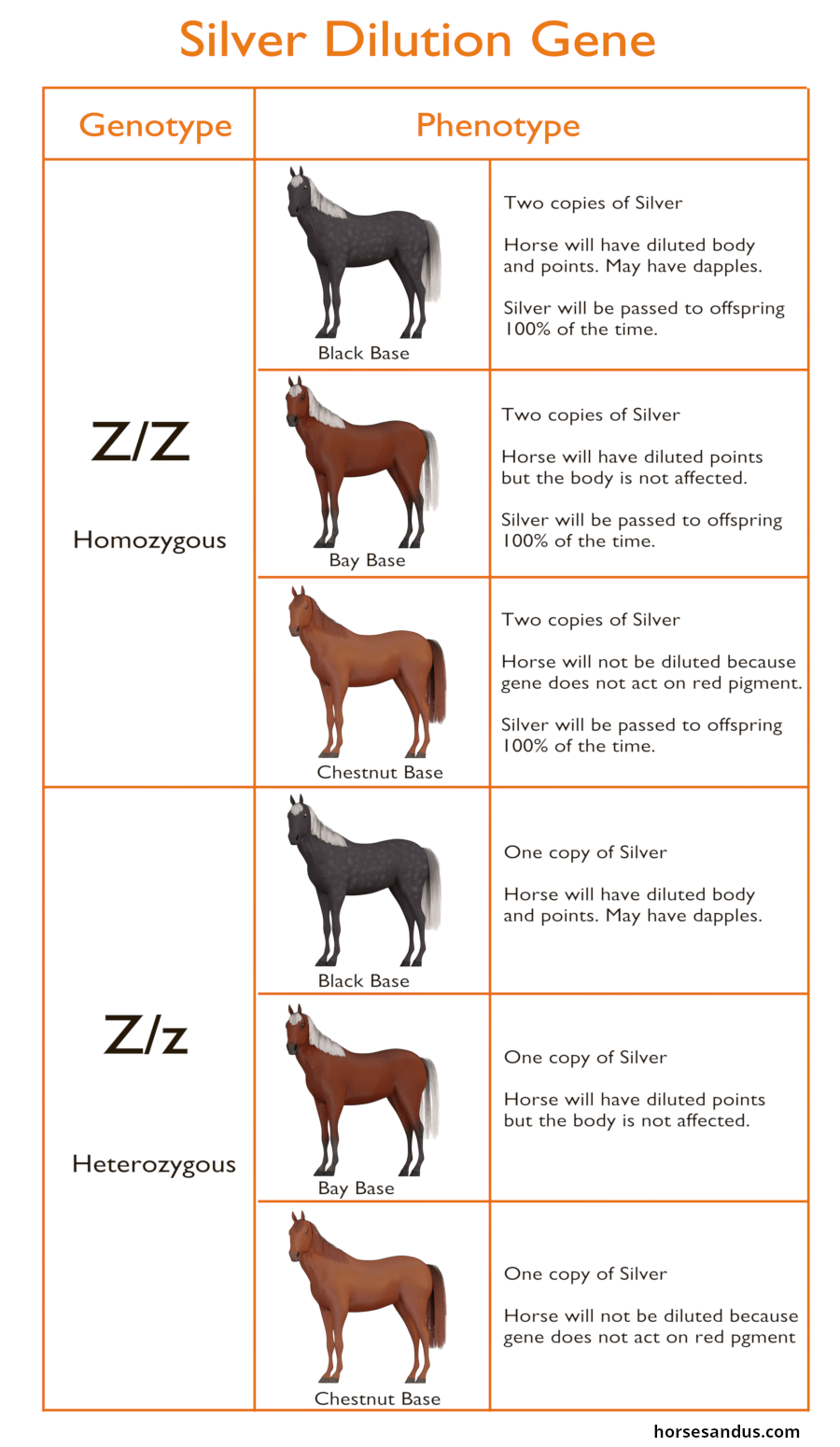
Silver Genes Inheritance
Since the Silver dilution is a dominant trait, a horse requires only one parent to carry and pass on the silver gene to inherit that trait.
The parent can either have the Silver phenotype or have the chestnut phenotype (chestnuts can carry a hidden silver gene and not express it)
Using the following Punnett squares with a Black Silver as an example, we can see some possible outcomes from different genotype combinations.
Horse Breeds That Can Have The Silver Coat Color?
The silver color remains relatively rare in the general horse population. But is highly desirable and is growing in some breeds.
It is common in the Icelandic horse.
The very first members of the Icelandic horse breed arrived aboard the Viking ships sometime between 860 and 935 AD. Since 982 AD, the importation of any other horse breeds into Iceland was prohibited. This means that for over a thousand years, the Icelandic horse has been kept in complete isolation.
So this means that the Silver mutation was already existing in other breeds before the colonization of Iceland.
This dilution is also present in the Norwegian Nordland pony, Shetland Pony, Welsh Mountain Pony, Finnhorse, and Ardennes.
Sporadically it can be found in Welsh ponies, Swedish warmbloods and Arabians.
On the other side of the Atlantic, it is also found in the Rocky Mountain Horse, Morgan Horse, American Paint Horse, Quarter Horse, American Saddlebred, American Miniature Horse, Peruvian Paso, and others.
Health issues associated with the Silver gene
The Silver dilution is associated with eye health problems named Multiple Congenital Ocular Anomalies (MCOA) syndrome.
This syndrome is hereditary and was first found in Silver colored Rocky Mountain horses.
The same gene mutation causes both the Silver coat color and the MCOA syndrome in horses. However, the effect of the gene is different for these two traits.
- It is dominant for the coat color trait. This means that the heterozygous (Z/z) and the homozygous (Z/Z) horses express the same phenotype for the coat color.
- It is incomplete dominant for the MCOA syndrome. This means that the homozygous horses (Z/Z) which inherited the gene from both parents have more severe ocular anomalies than the heterozygous horses (Z/z), only carry one Silver gene mutation.
Further Reading
If you would like to learn more about horse colors and white patterns, you may want to read the following books, available on amazon.
The links below that lead to products on Amazon are affiliate links and I earn a commission (with no additional cost for you) if you make a purchase.
The following books are an introduction to horse colors and white patterns which are full of images and very easy to understand.
The Equine Tapestry: An Introduction to Colors and Patterns The Ultimate Guide to Horse ColorsA more technical book about horse colors, but still very easy to understand.
Equine Color GeneticsSources
https://www.ncbi.nlm.nih.gov/pmc/articles/PMC3781063/
https://link.springer.com/article/10.1186/1471-2156-7-46
